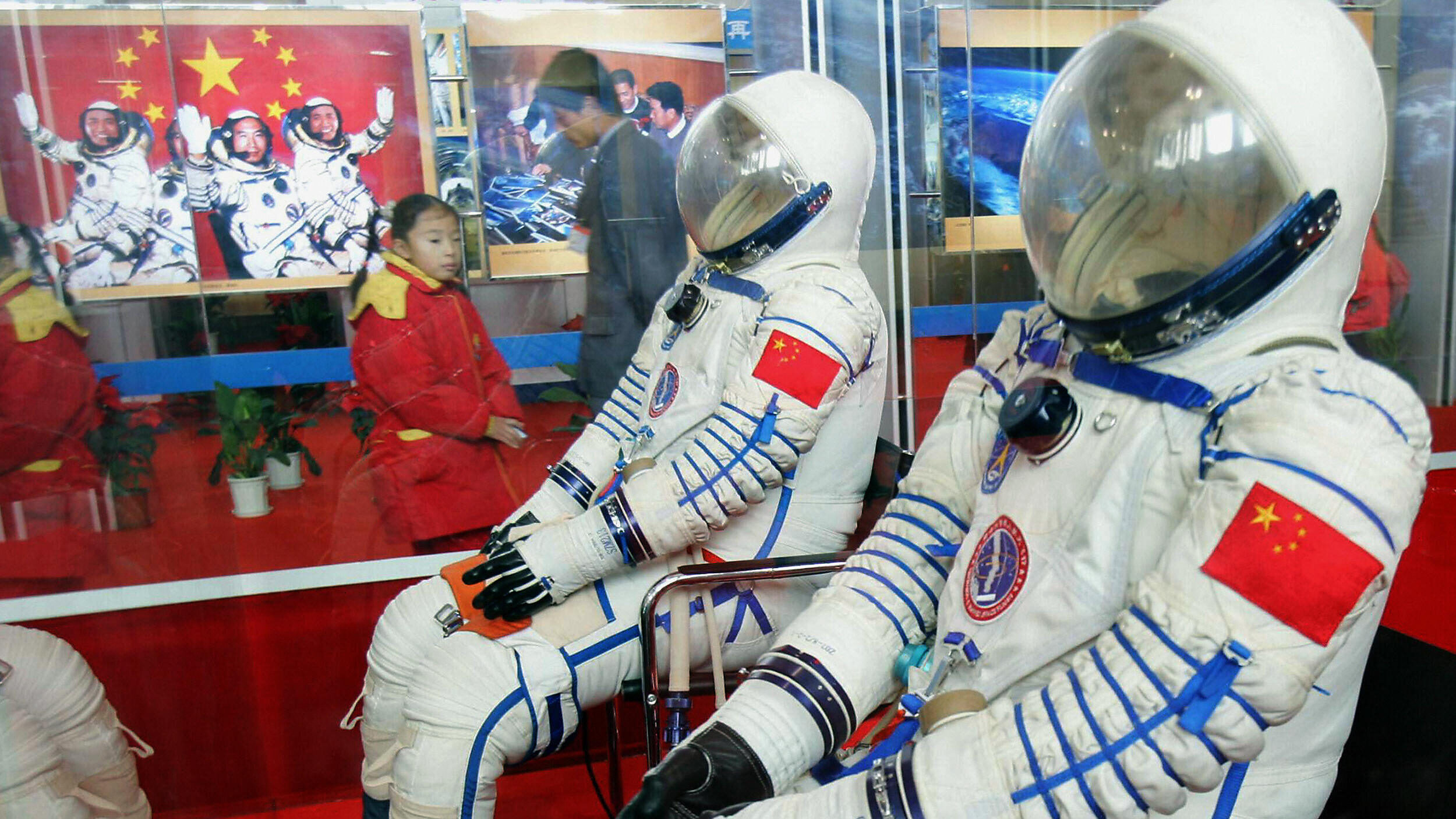THERESA HITCHENS

WASHINGTON — China is now “on track” to outpace the United States as the leading space power by 2045, according to the latest version of the space industrial base workshop report spearheaded in part by the Pentagon’s Defense Innovation Unit.
A reason for this pessimistic viewpoint is a collective “a lack of urgency” across the US government and industry, as well as a bureaucratic environment “that is constructively delaying U.S. commercial progress through regulatory burden,” states the report, “State of the Space Industrial Base: Winning the New Space Race for Sustainability, Prosperity and the Planet.”
“China could surpass the US in space superiority if we don’t increase our investment,” DIU Director Michael Brown said on Wednesday at an event sponsored by the Atlantic Council to release the 2022 report.
The report is the fourth in a series, stemming from an annual workshop that this year gathered more than 350 industry representatives and government officials, including from the Pentagon and the Intelligence Community. While the authors are active Defense Department officials, the report makes it clear it is not an official document; nor do the views expressed in the report represent official DoD or US government policy.
The report's authors are Steven “Bucky” Butow, DIU’s Space Portfolio director; Maj. Gen. John Olson, mobilization assistant to Space Force chief Gen. Jay Raymond; Col. Eric Felt, director of Space Architecture, Science and Technology in the Department of the Air Force Office of Space Acquisition and Integration; and Thomas Cooley, chief scientist at the Air Force Research Laboratory (AFRL) Space Vehicles Directorate. It was edited by Peter Garretson, a senior fellow at the American Foreign Policy Council. All are known for their advocacy of a more aggressive US government approach to what they see as China’s “hegemonic” plans for its role in an expanded future space economy.
The report itself makes clear that the goal of the workshop and the report is to promote what participants consider to be a “North Star” vision for America as leading human expansion into space beyond Earth.
“Participants support ‘Economic Development and Human Settlement’ as that enduring vision to retain U.S. economic leadership, preserve the Earth, and protect other national interests,” the report states. “A compelling, comprehensive, and clearly articulated North Star vision, with timelines to ensure the U.S. remains an undisputed space leader, must touch all instruments of national power — Economic/Industrial, Coalitional, Military, Informational, Technological — and be woven into similar terrestrial strategies promoting liberty and prosperity.”
Space, the report asserts, “is an economic domain that is resource and opportunity rich” but as yet lacks the infrastructure necessary to allow the domain to meet its full potential. The catch is that space’s economic opportunities come “with significant first mover advantage”
This year’s workshop focused on the speed at which the US space economy was evolving to include cutting-edge activities that eventually would lead to this vision of an American dominated solar system. The report explains:
“The 2022 State of the Space Industrial Base workshop focused primarily on one question, ‘Are we making the progress we should be, and if not why not’? For those who believe we are making progress, the question that follows is, ‘Are we going fast enough?’ The consistent answer was ‘no,’ with the majority of participant respondents saying we were not moving with a sense of urgency. In response to ‘What’s the sense of urgency?,’ many experts including the Atlantic Council asserted that, if current trends continue, the U.S. may lose space superiority by 2032.”
The report recognizes that the US commercial space sector has seen “tremendous growth,” and that there has been considerable venture capital investment in space startups. However, workshop participants fretted that “supply chain challenges, inflation and depth of workforce issues threaten the economic viability of space domestically, as well as, the ability to maintain a strong national security space posture.”
Industry also is being hampered, the report finds, by lack of clear and consistent investment by the US government, and issues with on-ramping commercial innovation, especially at DoD. This is even though commercial space capabilities “have forever changed the nature of conflict.”
Indeed, the authors point to several policy and process obstacles to making those investments across the US government but particularly within DoD.
“The agile engineering ecosystem that has become the hallmark of the modern space era is at risk due to some U.S. policy and procurement practices within the bureaucracy that are not aligned with, or work counter to, national space strategy,” the report states. “DoD requires a process to rapidly acquire and constitute commercially-sourced capabilities for U.S. and allied warfighters.”
The report goes on to assess current US capabilities and make recommendations for speeding development in specific technological arenas considered by workshop participants are key to the future space economy: launch services, hybrid space communications, in-space transportation and logistics, next-generation power and propulsion (including space-based solar power), and remote sensing and traffic management.
It also reviews US government policies toward space systems development, processes for financing space innovation, the state of the space workforce, and STEM education.
The authors sum up in their executive summary: “Strategic competition in space remains a paramount concern. … Proactive measures are required to sustain our nation’s space leadership across all instruments of national power despite China’s attempt to accelerate closing its technology gap with the U.S.”
No comments:
Post a Comment